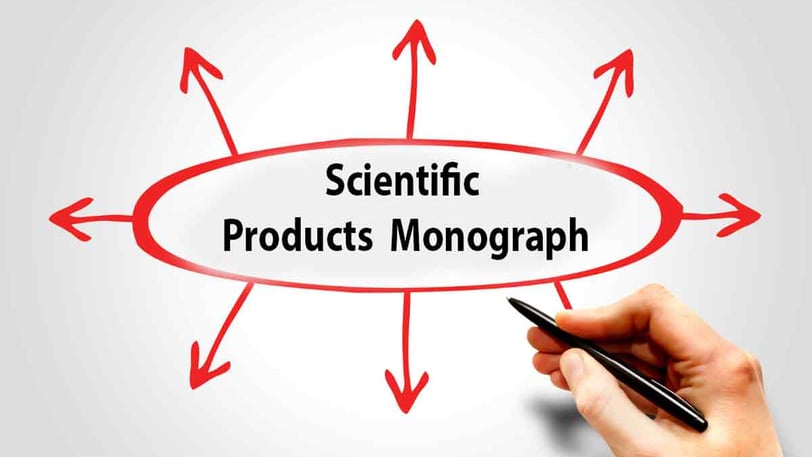Understanding Pharmaceutical Product Monographs: Importance and Structure
Explore the significance and structure of pharmaceutical product monographs. Gain insights into their role in ensuring safe and effective medication use.
BLOG
admin
6/11/20254 min read


Pharmaceutical Product Monograph: An Overview
A pharmaceutical product monograph is a comprehensive document that provides detailed information about a specific drug product. It serves as a critical resource for healthcare professionals, regulatory authorities, and patients, offering essential data on the drug's composition, therapeutic uses, dosage, administration, safety, and efficacy. The monograph is a key component of drug regulation and ensures that the product is used safely and effectively in clinical practice.
Purpose and Importance
The primary purpose of a pharmaceutical product monograph is to communicate scientifically validated information about a drug product. It is a regulatory requirement in many countries and is often submitted as part of the drug approval process. The monograph ensures that all stakeholders have access to accurate, standardized, and up-to-date information about the drug, which is essential for making informed decisions regarding its use.
For healthcare professionals, the monograph provides guidance on prescribing, dosing, and monitoring the drug, helping to optimize patient outcomes. For regulatory authorities, it serves as a reference for evaluating the drug's safety, efficacy, and quality. For patients, it offers accessible information about the drug's benefits, risks, and proper use.
Structure of a Pharmaceutical Product Monograph
The structure of a pharmaceutical product monograph may vary slightly depending on the regulatory requirements of different countries. However, it generally includes the following sections:
1. Product Information: This section provides basic details about the drug, including its brand name, generic name, dosage form, strength, and route of administration. It also lists the active and inactive ingredients, as well as the pharmaceutical form (e.g., tablet, capsule, injection).
2. Clinical Pharmacology: This section describes the drug's mechanism of action, pharmacokinetics (absorption, distribution, metabolism, and excretion), and pharmacodynamics (effects on the body). It provides a scientific basis for the drug's therapeutic use and helps healthcare professionals understand how the drug works.
3. Indications and Usage: This section outlines the approved therapeutic uses of the drug, including the conditions or diseases it is intended to treat. It may also include information about off-label uses, if applicable.
4. Dosage and Administration: This section provides detailed instructions on how to use the drug, including the recommended dosage, frequency, and duration of treatment. It may also include special instructions for specific populations (e.g., pediatric, geriatric, or renally impaired patients) and guidance on adjusting the dose based on patient factors.
5. Contraindications: This section lists situations or conditions in which the drug should not be used due to potential risks. Contraindications may include hypersensitivity to the drug or its components, certain medical conditions, or concomitant use with other medications.
6. Warnings and Precautions: This section highlights important safety information, including potential risks associated with the drug. It may cover issues such as drug interactions, adverse reactions, and special precautions for specific populations (e.g., pregnant or breastfeeding women).
7. Adverse Reactions: This section provides a comprehensive list of side effects that have been observed in clinical trials or post-marketing surveillance. It typically categorizes adverse reactions by frequency (e.g., common, rare) and severity (e.g., mild, serious).
8. Drug Interactions: This section describes potential interactions between the drug and other medications, foods, or substances. It provides guidance on managing or avoiding these interactions to prevent adverse effects or reduced efficacy.
9. Use in Specific Populations: This section provides information on the use of the drug in special populations, such as pregnant or breastfeeding women, pediatric patients, geriatric patients, and those with renal or hepatic impairment. It may include recommendations for dose adjustments or monitoring.
10. Overdosage: This section outlines the symptoms and management of drug overdose. It provides guidance on treating overdose cases, including supportive measures and specific antidotes, if available.
11. Pharmacology and Toxicology: This section provides additional scientific information about the drug's pharmacological properties, including preclinical data from animal studies. It may also include toxicological data, such as the drug's potential for carcinogenicity, mutagenicity, or reproductive toxicity.
12. Clinical Studies: This section summarizes the results of key clinical trials that support the drug's safety and efficacy. It provides an overview of study design, patient populations, and outcomes, helping to establish the evidence base for the drug's use.
13. Storage and Handling: This section provides instructions for storing the drug, including temperature, light, and humidity requirements. It may also include information on proper disposal and handling to ensure the drug's stability and safety.
14. Patient Counseling Information: This section offers guidance on what patients should know about the drug, including how to take it, potential side effects, and precautions. It may also include information on patient assistance programs or resources.
Regulatory and Ethical Considerations
The development and dissemination of a pharmaceutical product monograph are subject to strict regulatory and ethical standards. Regulatory authorities, such as the U.S. Food and Drug Administration (FDA) or the European Medicines Agency (EMA), review and approve the monograph as part of the drug approval process. The information in the monograph must be based on robust scientific evidence, including data from clinical trials, preclinical studies, and post-marketing surveillance.
Ethical considerations also play a crucial role in the preparation of a monograph. The information must be presented in a clear, accurate, and unbiased manner to ensure that healthcare professionals and patients can make informed decisions. Transparency and accountability are essential, particularly when it comes to disclosing potential risks and limitations of the drug.
Conclusion
The pharmaceutical product monograph is a vital document that bridges the gap between scientific research and clinical practice. It provides a comprehensive overview of a drug's properties, uses, and safety profile, enabling healthcare professionals to prescribe and administer the drug with confidence. By adhering to regulatory and ethical standards, the monograph ensures that the drug is used safely and effectively, ultimately contributing to better patient outcomes and public health.
